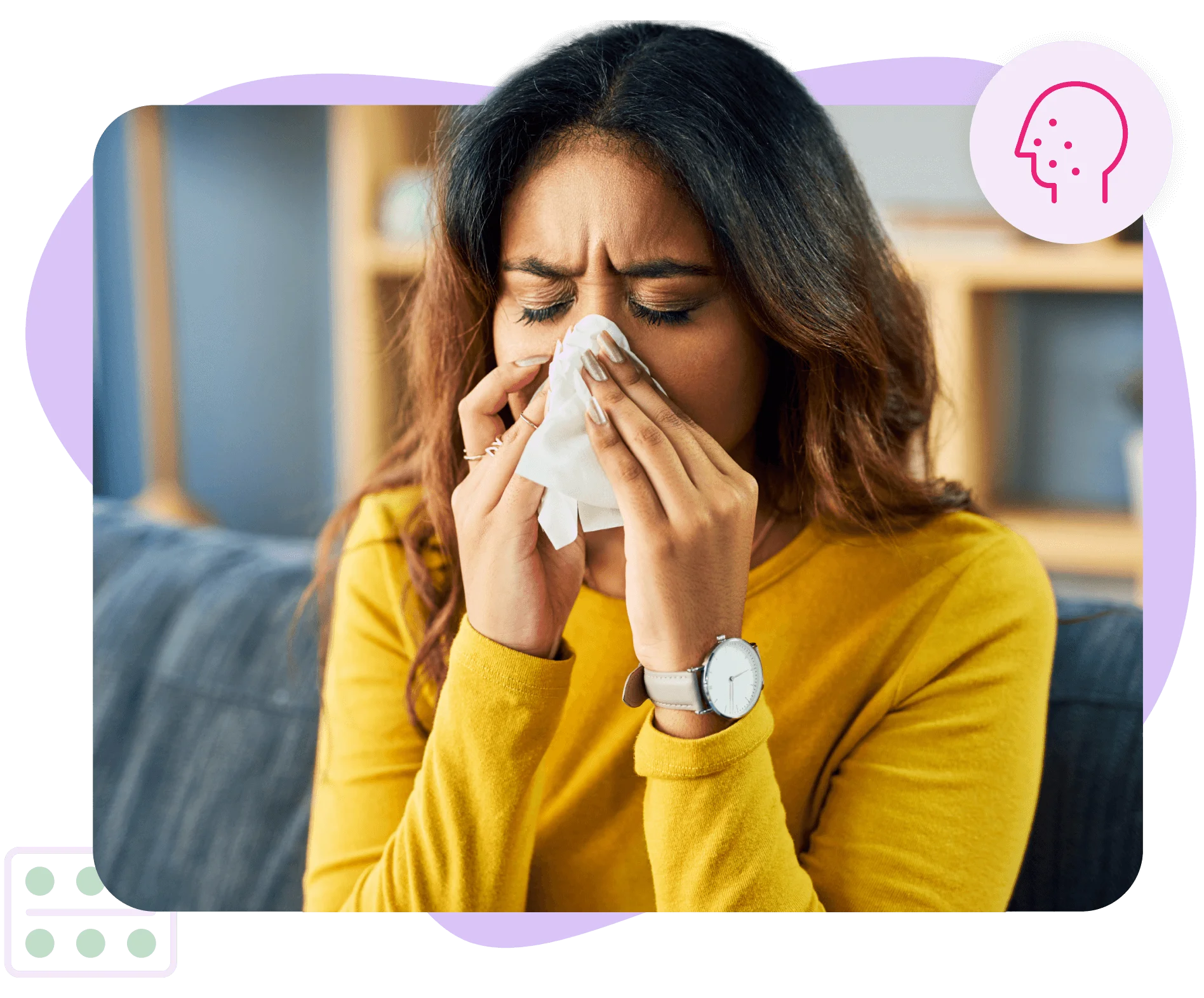Overview
Both the cold and flu (influenza) are highly contagious viral infections that affect the respiratory system. The common cold is a mild and most often harmless viral infection primarily caused by rhinoviruses. The flu is a more severe viral infection caused by influenza viruses.
It is important to note that the flu (influenza) is not the same as the stomach flu (gastroenteritis), which can be a viral or bacterial infection that affects the gastrointestinal tract.

Causes
Colds
Colds are primarily caused by rhinoviruses but can also be caused by other viruses such as coronaviruses and adenoviruses.
You can catch a cold by:
- Breathing in the respiratory droplets that travel through the air when an infected person coughs, sneezes, or talks
- Touching surfaces (railings, handles, countertops)
- Sharing objects (phones, keyboards, towels, toys), contaminated with the virus
- Touching the hand of someone who has a cold
- Touching you nose, mouth or eyes after getting the cold virus on your fingers
Flu
The flu is usually caused by influenza A or B—the two most common types of the influenza virus that lead to seasonal flu outbreaks. But influenza viruses are constantly changing so new strains appear yearly.
You can catch the flu by:
Similar to the common cold, you can catch it through breathing in respiratory droplets or touching contaminated surfaces or objects.
Symptoms
Common cold
Cold symptoms come on slowly and may include a low-grade fever (37.5°C – 37.9°C).
- Runny or stuffy nose
- Sneezing
- Runny nose, that normally becomes thicker and more opaque later on
- Sore throat
- Cough (often mild)
- Fatigue, mild weakness, or feeling unwell
- Mild body aches
- Mild headache
- Watery eyes
- Mild, low-grade fever (more common in children)
Flu
Flu symptoms typically strike suddenly and can be more severe than those of a cold and can include high fever (usually above 38°C). In short, the flu tends to last longer and make you feel worse.
- Headaches
- Body aches
- Chills and sweats
- Dry and persistent cough
- Sore throat
- Weakness, fatigue, or feeling exhausted
- Trouble sleeping
- Vomiting
- Diarrhoea
- Stomach pain
- High fever
Prevention
Preventing colds and flu is about reducing exposure to viruses and keeping your immune system strong.
- Frequently wash your hands with soap and water. This is one of the best, and easiest things you can to help stop the spread of viruses.
- Avoid close contact with individuals who are sick.
- Wear a mask if you have to be in close contact with people who are sick.
- Stay home and get some rest if you are not feeling well.
- Live a healthy lifestyle—eat well, exercise, don’t smoke.
- Getting vaccinated against the flu annually is the most effective way to prevent it. There is no vaccine for the common cold.
Treatment
There is no cure for cold and flu viral infections. Ultimately, the best treatment involves supporting your immune system’s natural response with rest, hydration, and relieving symptoms.
How to treat your cold and flu symptoms
- Get rest and stay hydrated, drink plenty of water
- Take paracetamol or ibuprofen for head or body pain and fever. But don’t take them simultaneously.
- Take decongestants, antihistamines, and cough suppressants to provide relief from nasal congestion, runny nose, and coughing.
- Stay warm
- Use a humidifier or saline nasal spray to help ease nasal congestion and soothe irritated airways.
- In some cases, antiviral medications may be prescribed for the flu. Remember, antibiotics do not work for viral infections like the flu.
FAQ
How long do cold symptoms usually last?
You should start to feel better after 7 to 10 days. Symptoms may last longer in children or in people who smoke. Children also tend to get colds more often than adults.
How long do flu symptoms usually last?
Flu symptoms tend to last for about 1 to 2 weeks. Fatigue and weakness may last even longer in vulnerable populations such as young children, older adults, pregnant women, and individuals with weakened immune systems or underlying health conditions.
When does a fever become dangerous?
Fevers around 38°C are your body’s natural way of fighting infections related to colds and flu. A fever over 39.4°C (103°F) is considered high-grade, and you should seek medical attention, especially for infants, young children, older adults, and individuals with weakened immune systems.




























